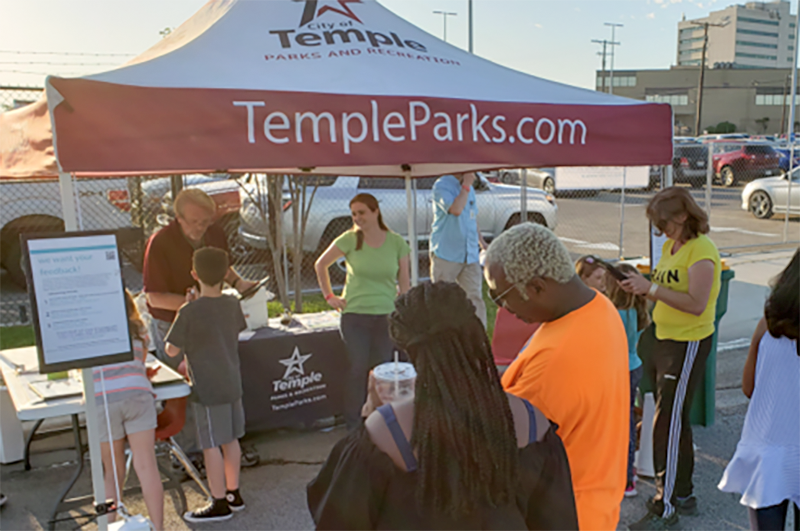Part II: Stay Calm and Carry On … With Virtual Public Engagement
Editor’s note: This is the second part of a two-part series on virtual public engagement. Part I detailed common tools and features for conducting virtual meetings.
The temporary suspension of open-meeting gatherings has challenged everyone to find virtual platforms and effective methods for maintaining communication with the public and key stakeholders over the past few months.
During this time of social distancing, virtual calls have replaced traditional in-person collaboration opportunities such as town hall and open house meetings, public hearings, stakeholder meetings, advisory committee meetings, design charrettes and pop-up or special events.
While mastering these virtual tools is important to conduct engaging, worthwhile meetings and gain valuable input from constituents, keeping the original purpose of the meeting and maintaining a human touch are also critical. What do we mean by that?
-
Keep engagement moving forward.
-
Know what feedback you need, and choose the appropriate tool.
-
Remember that all meetings are simply about people and their ideas.
-
Be an engaged listener.
-
Don’t forget about possible “old school” touch points outside the virtual realm such as distributing and collecting surveys using realtor-style signs and tubes.
-
Report back what you heard to everyone, even to those who could not attend the meeting.
In other words, be smart. Be flexible. Be professional. Communicate quickly and openly so everyone can remain engaged in your process.
Here are some thoughts about transitioning traditional engagement into a virtual environment:
Stakeholder Meetings
-
Purpose: Gather input from a selected target audience; generate and vet ideas.
-
Virtual tool replacement options: Digital questionnaires (such as SurveyMonkey) and small-group virtual meetings (such as Zoom or Webex).
-
Pros: It allows stakeholders to respond to focused questions on their time; provides equitable participation.
-
Cons: This method can lessen collaborative brainstorming or the group’s perception of importance.
Advisory Committee Meetings
-
Purpose: Gather input from a designated group; conduct presentations and interactive exercises; develop and vet ideas.
-
Virtual tool replacement options: Small- or large-group virtual meetings with interactive polling; interactive mapping exercises; virtual walking and driving tours.
-
Pros: Digital distribution and feedback allow committee members more flexible time to respond.
-
Cons: Brainstorming is less collaborative; lack of face-to-face meetings might reduce understanding and buy-in.
Design Charrettes
-
Purpose: Gather targeted input on the built environment from knowledgeable and invested stakeholders.
-
Virtual tool replacement options: Virtual driving/walking tours; small-group virtual meetings with live, interactive whiteboard idea generation.
-
Pros: It allows stakeholders to respond on their own time.
-
Cons: Feedback and versioning may not be immediate; may have to administer over many working sessions.
Open House Meetings
-
Purpose: Gather feedback from a community-wide audience.
-
Virtual tool replacement options: Large-group virtual meeting (such as Zoom and Webex, or a Facebook/YouTube live event) with interactive polling and hand-typed questions or feedback.
-
Pros: This method may potentially grow the participation rate. If recorded, it allows participants to view on their own time.
-
Cons: It may further preclude participation from vulnerable populations; decreases the opportunity for one-on-one interaction and education; makes the process less personable.
Pop-Up/Special Events
-
Purpose: To gather input from a random audience, sometimes related to the theme of the special event.
-
Virtual tool replacement options: Digital education or feedback questionnaires (such as SurveyMonkey) distributed digitally via a sign with a QR code at entrances to frequently visited places.
-
Pros: It provides an opportunity to increase touch points during emergency situations; uses technology, which resonates with younger generations.
-
Cons: This format does not replace the benefit of the one-on-one interaction made possible by the special event.
Public Hearings
-
Purpose: Present to elected and appointed officials and the general public; required by state law (in some cases), city charter or as part of normal operating procedures.
-
Virtual tool replacement options: Virtual meeting replacement as specified by city policy (such as Zoom, Webex, municipal TV channels or live streaming).
-
Pros: This keeps projects and community decision-making moving forward.
-
Cons: It doesn’t provide the same personable level of interaction or connection as an in-person public hearing.
Embrace digital platforms, but don’t rely too heavily on one tool or trend. Your engagement strategy should be diverse, like your community. It will allow your goals and values to be communicated more clearly to a wide-ranging audience.
Public engagement is often about sticking to the basics and reaching people where they are—on their terms.
Determine which virtual meeting tools help you do that best … and carry on with public engagement.
If you missed Part I of this series, click this link to get more information about tools that will help you achieve virtual meeting success. Write to Info@Halff.com for more resources.








